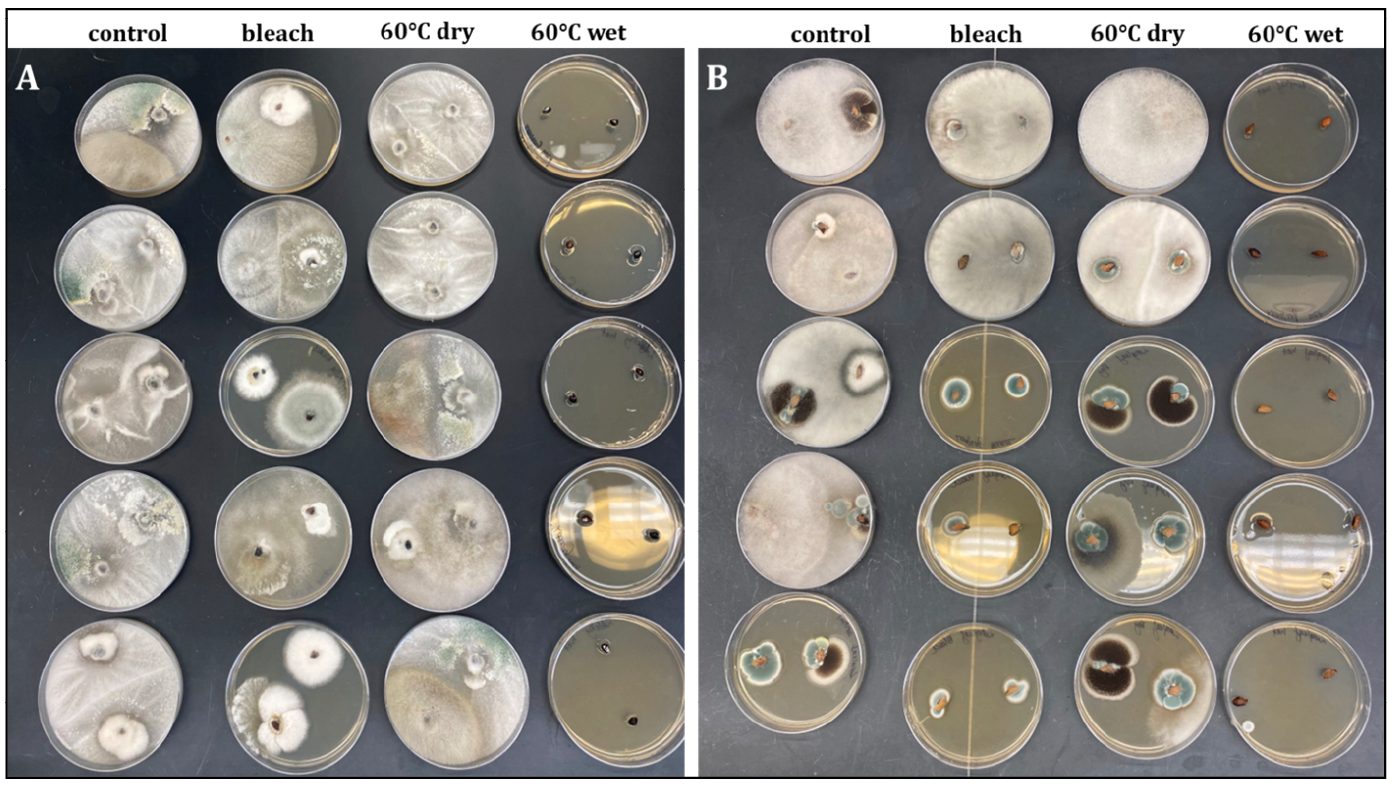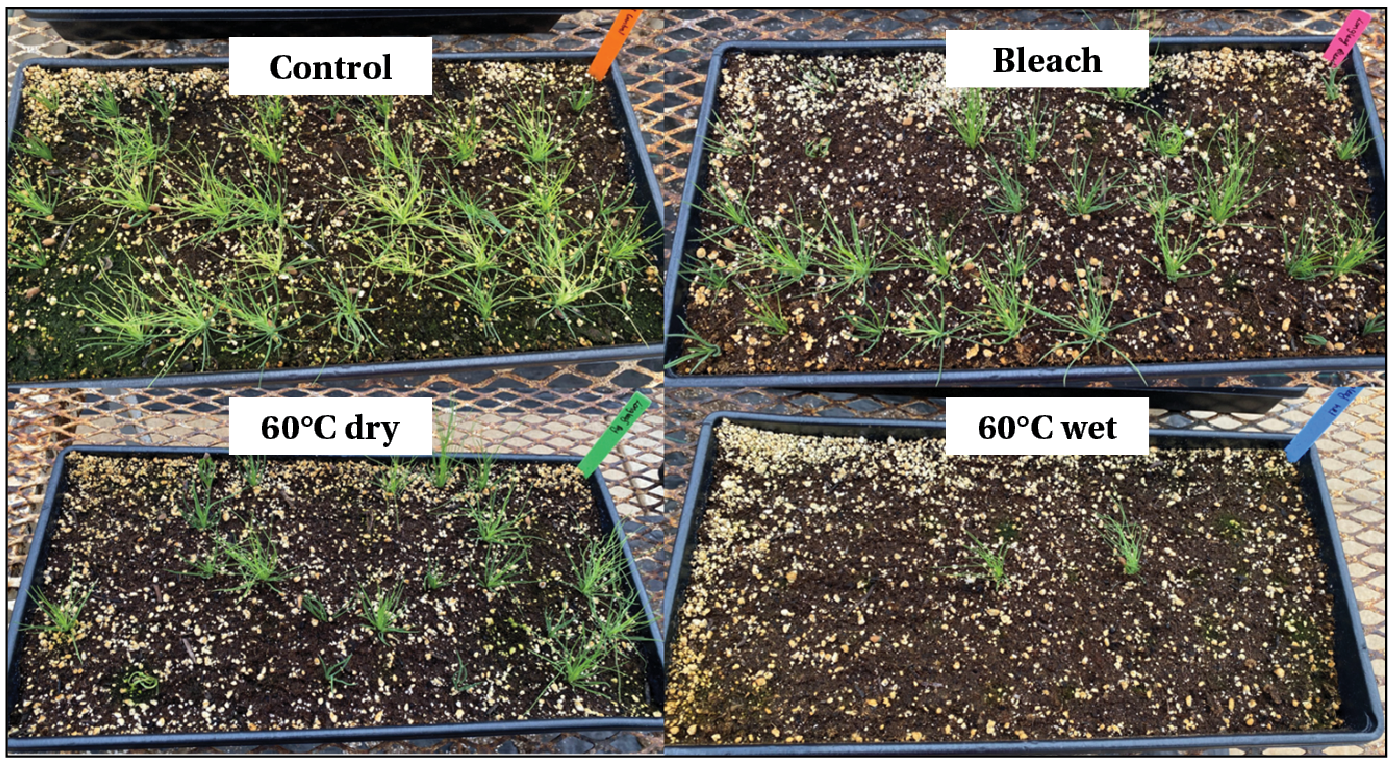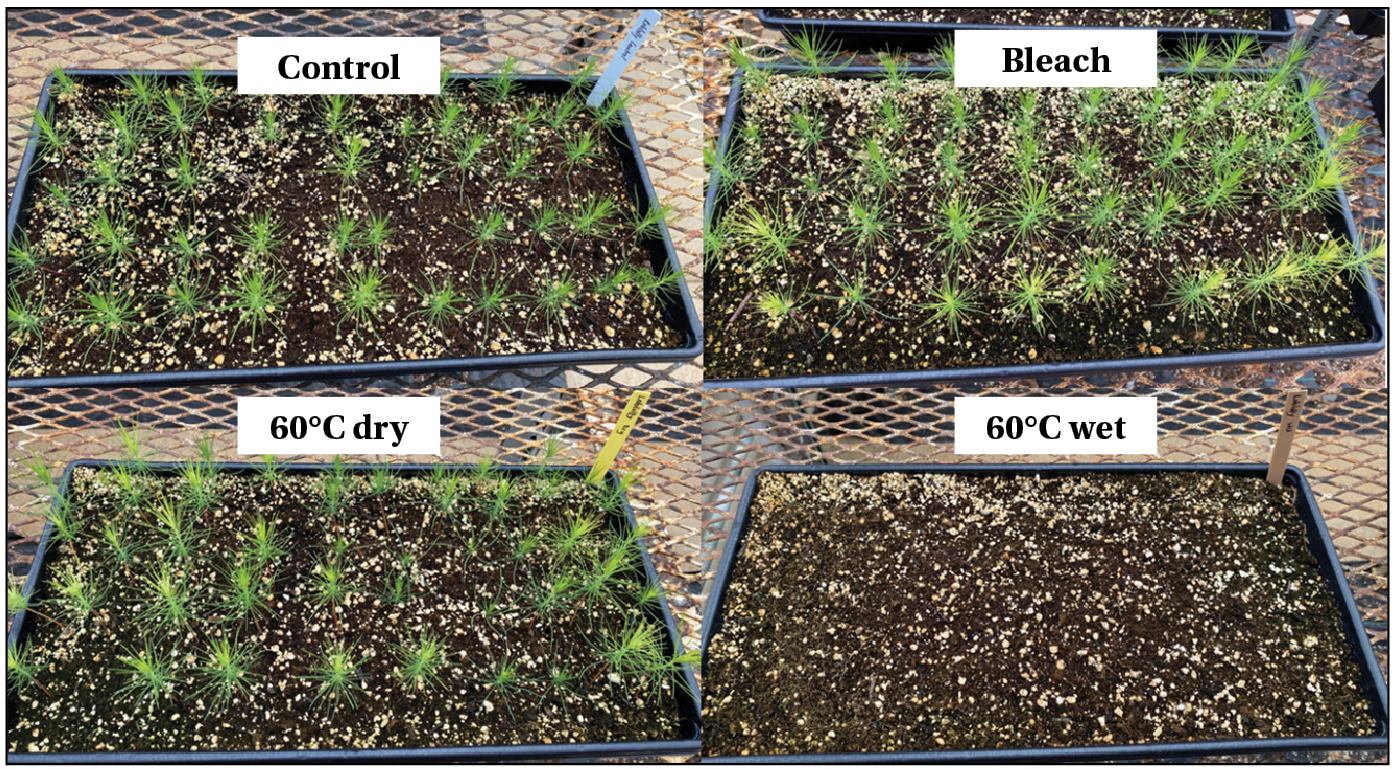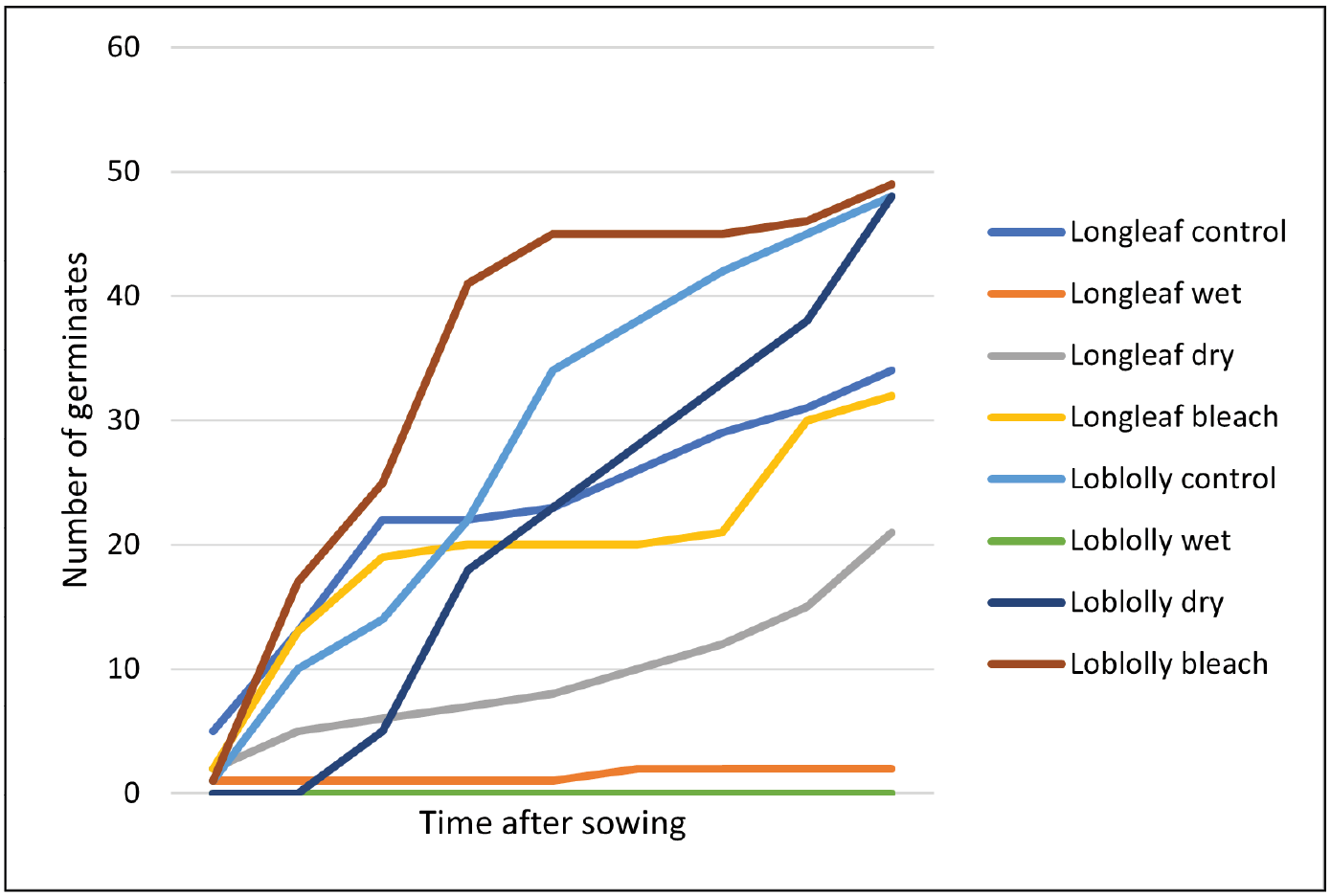Research Report 22-05 
Efficacy of Wet and Dry Heat Treatments for Disinfection of Loblolly and Longleaf Pine Seed
Annakay Newell and Scott Enebak
 Figure 1. Fungal growth after loblolly (A) and longleaf (B) pine seeds were treated and plated on potato dextrose agar plates and incubated for 7 days.
Figure 1. Fungal growth after loblolly (A) and longleaf (B) pine seeds were treated and plated on potato dextrose agar plates and incubated for 7 days.
 Figure 2. Decreased germination of longleaf pine seed was observed in all treatments when compared to the control. The most significant decrease was observed in treatment with water at 60°C.
Figure 2. Decreased germination of longleaf pine seed was observed in all treatments when compared to the control. The most significant decrease was observed in treatment with water at 60°C.
 Figure 3. Treatment of loblolly pine seed with water at 60°C resulted no germination.
Figure 3. Treatment of loblolly pine seed with water at 60°C resulted no germination.
 Figure 4. Germination rate and number of loblolly and longleaf pine seeds. A total of 50 seeds were sown for each treatment.
Figure 4. Germination rate and number of loblolly and longleaf pine seeds. A total of 50 seeds were sown for each treatment.
Introduction
The presence and persistence of pathogens that become established on or within conifer and hardwood seeds can cause significant reductions in germination and seedling quality. Damping-off pathogens such as Fusarium, Phytophthora, Pythium, and Rhizoctonia are often present on seed, causing decay, wilting, and seedling death. Seed disinfection is therefore important for maintaining high seed efficiency as cleaner seeds lead to improved establishment. The use of fungicides, sodium hypochlorite (bleach), and hydrogen peroxide have traditionally been used to decontaminate seeds; however, these methods have proven to be more difficult in some species such as longleaf pine (Pinus palustris) due to its relatively large size and difficultly in removing the wing.
Heat treatment of seed is a method that is widely used in agriculture and food processing. In fact, the most commonly used physical method for seed sterilization is exposure to moist heat. A range of seed species can be hot water treated without negative effects on germination or growth. The effects of dry heat exposure on a wide range of seed species are, however, less well-known.
The aim of this study was to test the efficacy of wet and dry heat treatments as alternatives to bleach for disinfection of loblolly (Pinus taeda) and longleaf (Pinus palustris) pine seed, and to assess the effects of these treatments on seed germination and rate.
Methodology
Loblolly and longleaf pine seeds were stratified for 45 and 14 days respectively. Seeds were placed in Ziplock® bags in a refrigerator at 4°C and inverted every 24 hours. Sixty seeds of each species were exposed to each of four treatments. Treatments included immersion in 100 ml of water at a constant temperature of 60°C for 1 hour, exposure to dry heat at 60°C for 1 hour in an incubator, immersion in 100 ml of 10% sodium hypochlorite for 15 minutes, and a control of no treatment. Seeds treated with sodium hypochlorite were subsequently washed with sterile water. Ten seeds were plated (2 per plate) on potato dextrose agar amended with 100 mg/liter ampicillin and 25 mg/liter rifampicin in a laminar flow hood. Plates were incubated for 7 days at 23°C after which fungal contamination was visually assessed. The remaining 50 seeds were sown in germination trays and the total number of germinates recorded each day.
Results and Discussion
There was no fungal growth observed on seeds immersed in water at 60°C for 1 hour compared to other treatments where growth of different fungal species can be observed (Fig.1). The 60°C treatment was the most effective at disinfecting seeds but negatively affected germination in both longleaf (Fig. 2) and loblolly (Fig. 3) pine. A lower temperature or shorter duration may be effective at reducing fungal load while retaining high germination rates. Loblolly pine seeds that were treated with bleach germinated faster than other treatments and had a higher total number of germinates (Fig. 4).
Management Implications
Although only one temperature and duration per treatment were tested in this experiment, wet and dry heat treatments may not be suitable alternatives for the disinfection of pine seeds. Wet heat of 60°C killed micororganisms on seeds but resulted in a complete loss of germination.
References
S. Godefroid, A. Van De Vyver, P. Stoffelen & T. Vanderborght (2017) Effectiveness of dry heat as a seed sterilisation technique: Implications for ex situ conservation, Plant Biosystems - An International Journal Dealing with all Aspects of Plant Biology, 151:6, 1054-1061.
D. Wenny and R.K. Dumroese (1987). Germination of Conifer Seeds Surface-Sterilized With Bleach. Tree Planter’s Notes. 38,18 - 21.
Tolorunse, Kehinde & Ibrahim, Hasheem & Aliyu, N. & Oladiran, J. (2015). The Quality of Jute Mallow Seeds Exposed to Different Hot Water-Steeping and Cooling Protocols. American Journal of Experimental Agriculture. 7, 107-117.
K.O. Oyekale, S.O. Adeoye, O.E. Akinboye, O.O. Oyekale, J.A. Adeyeye. (2021). Comparative Effect of Wet and Dry Heat Seed Treatment Methods on the Agronomic and Yield Characteristics of Corchorus olitorius Linn. International Journal of Research and Innovation in Applied Science. 6:1,102-110.




